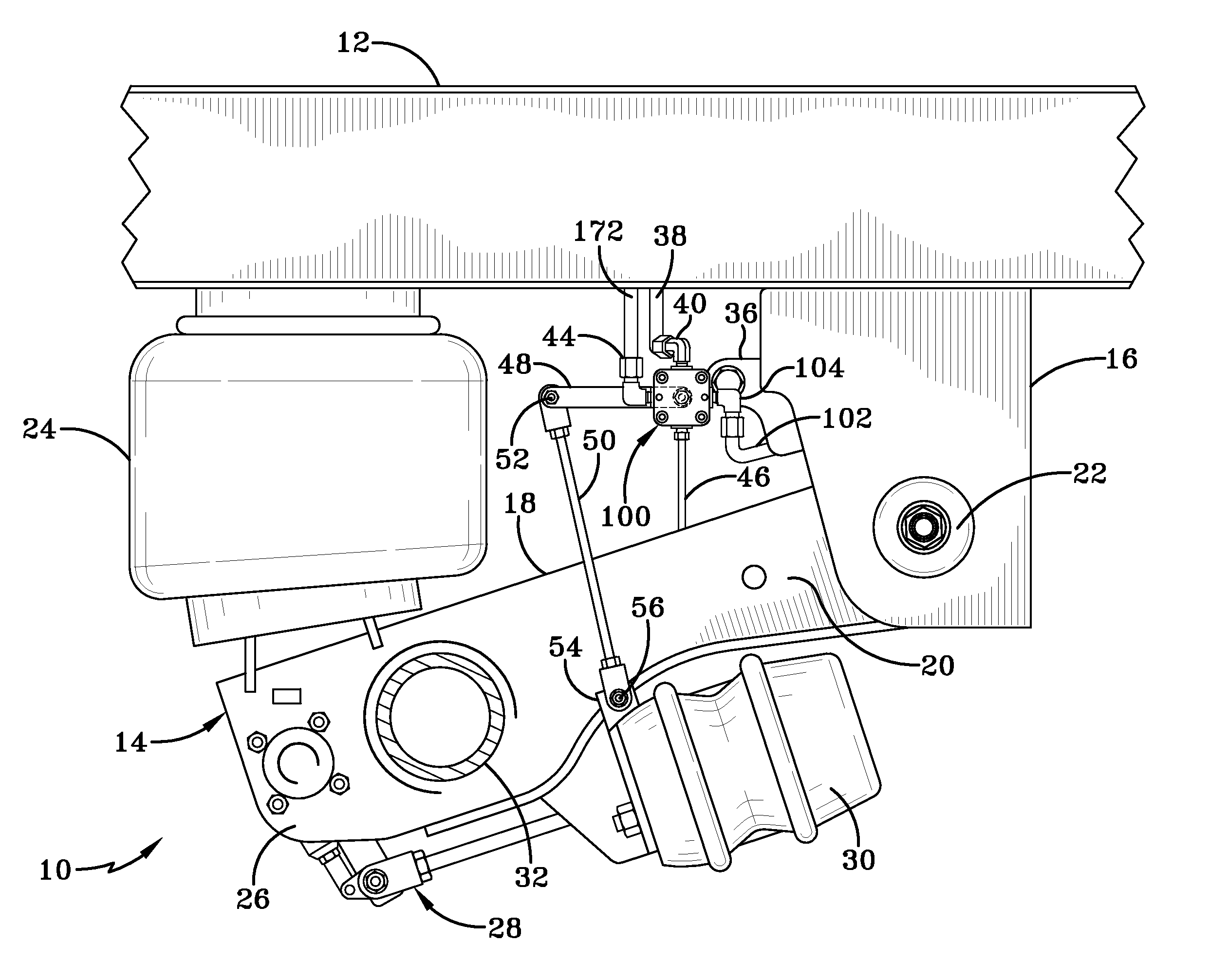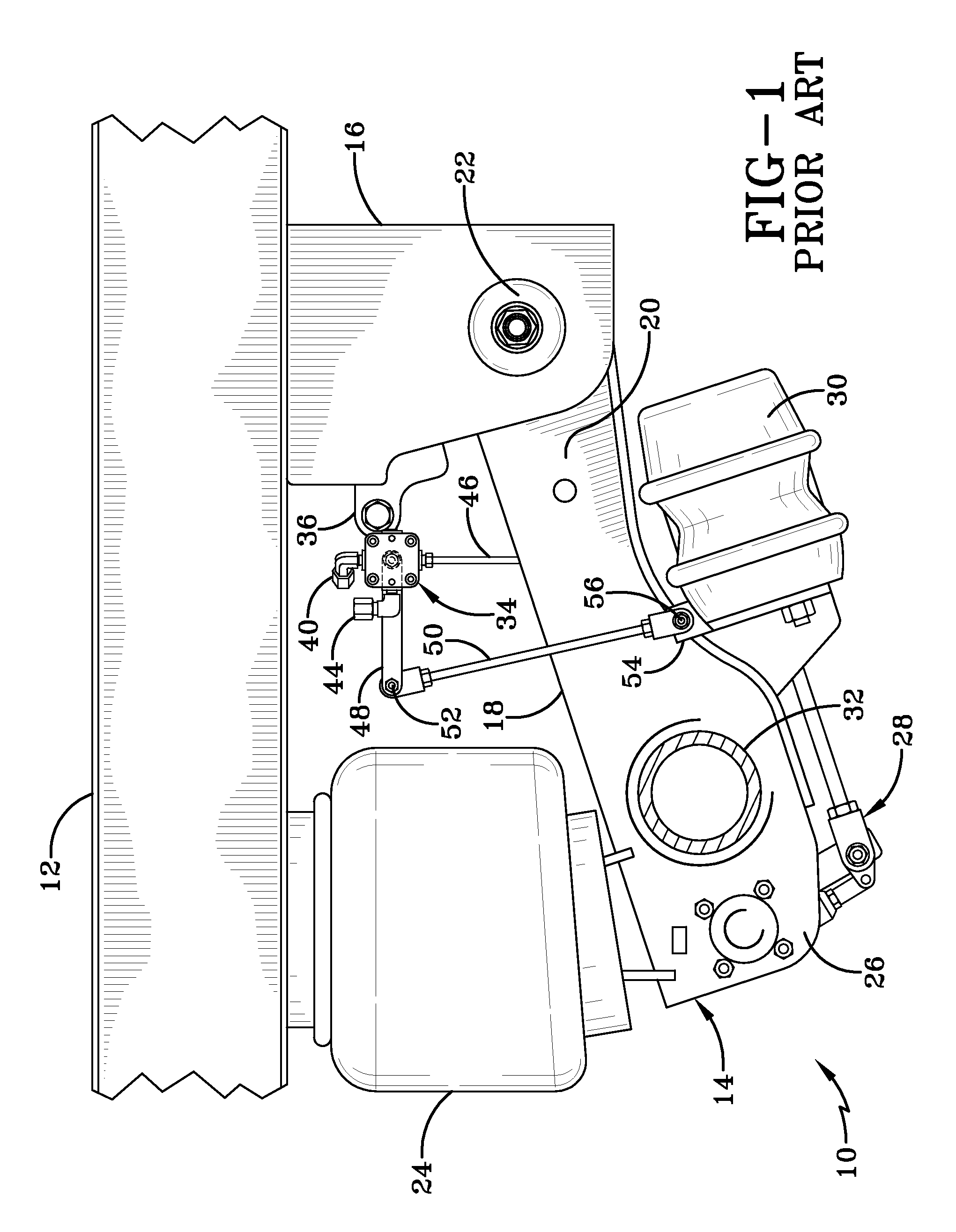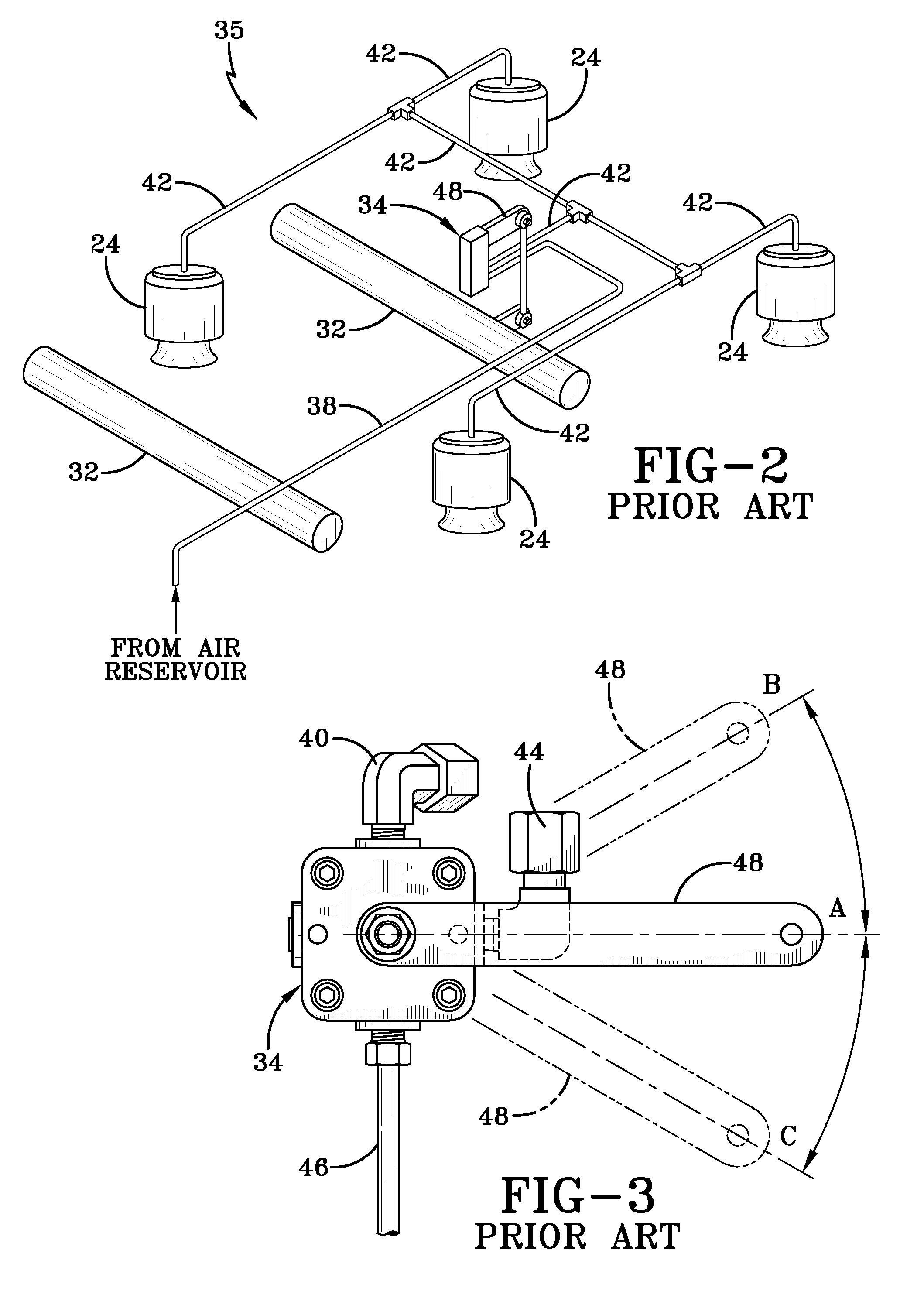Multi-stage height control valve including position sensitive pilot signal and pressure boost for vehicle air springs
a multi-stage, height control valve technology, applied in the direction of shock absorbers, loading/unloading vehicles, transportation items, etc., can solve the problems of relative rough ride, difficulty on the part of the vehicle operator to determine, and air exhausted from the air springs
- Summary
- Abstract
- Description
- Claims
- Application Information
AI Technical Summary
Benefits of technology
Problems solved by technology
Method used
Image
Examples
first embodiment
[0059]As set forth above, first embodiment multi-stage height control valve 100 includes both rotor valve portion 194 and boost valve 146, which will now be described. Turning to FIGS. 12 and 13, multi-stage height control valve 100 is shown schematically with rotor valve portion 194 and pilot boost valve 146. Pilot boost valve 146 of height control valve 100 is a two position, three way pilot valve well known to those having skill in the relevant art. Boost valve 146 includes a pilot port 174a which is piloted by an integrated load proportioning valve 166 via a boost pilot conduit 162. Pilot boost valve 146 is in fluid communication with pilot opening 132 (FIG. 6) and pilot port 134 via an internal pilot conduit 160. Boost valve 146 is also in fluid communication with air reservoir 66 via air reservoir conduit 38 and a boost conduit 192. A bleed conduit 164 is in fluid communication with secondary ride height conduit 102 and with atmosphere. Bleed conduit 164 allows pressure in sec...
second embodiment
[0081]With continuing reference to FIG. 14, a key feature of second embodiment height control valve 200 of the present invention will now be described. When the operator of the vehicle desires to raise the ride height of the vehicle in order to provide greater ground clearance over high sections of the road surface, such as railroad tracks and off road conditions, the operator actuates a switch (not shown) which is electrically connected to solenoid valve 62, which in turn energizes the solenoid valve into its energized state 62E. In this state, air is routed from air reservoir 66, through air reservoir conduit 38, through first air spring conduit 202, through pilot valve 208, through the solenoid valve, through third air spring conduit 222, and into front and rear air springs 24F,R, thereby raising the vehicle ride height. As the vehicle raises, axle suspension system 10 articulates to an air spring extended position and the distance between vehicle frame 12 and beam 18 increases, ...
PUM
 Login to View More
Login to View More Abstract
Description
Claims
Application Information
 Login to View More
Login to View More - R&D
- Intellectual Property
- Life Sciences
- Materials
- Tech Scout
- Unparalleled Data Quality
- Higher Quality Content
- 60% Fewer Hallucinations
Browse by: Latest US Patents, China's latest patents, Technical Efficacy Thesaurus, Application Domain, Technology Topic, Popular Technical Reports.
© 2025 PatSnap. All rights reserved.Legal|Privacy policy|Modern Slavery Act Transparency Statement|Sitemap|About US| Contact US: help@patsnap.com



